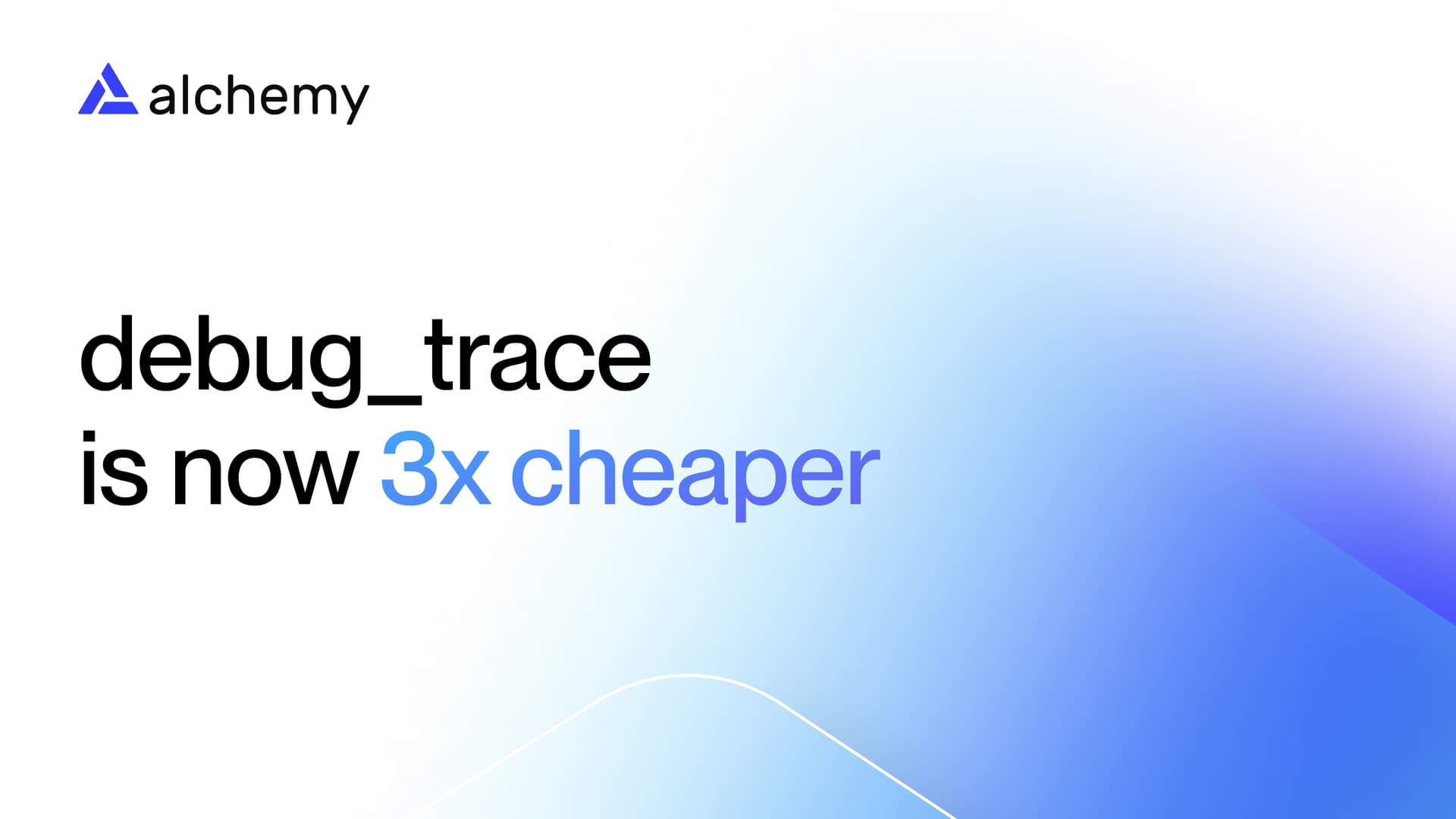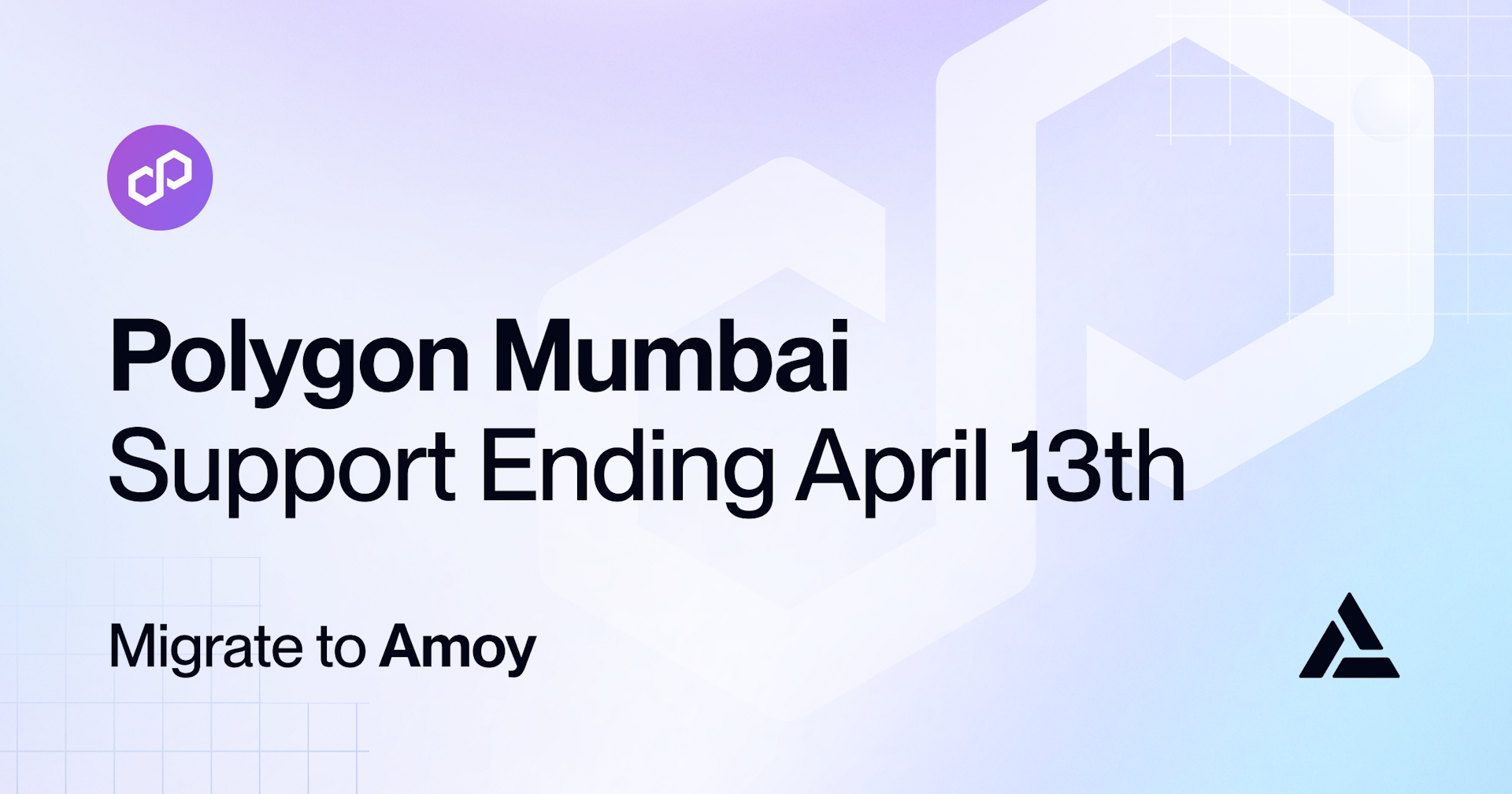The Future is Multichain
We’ve recently announced support a new blockchain, Arbitrum. In this post we’ll talk about our multichain roadmap — why we’re diving in and where we’re headed.

If you’re reading this, you’re probably an Ethereum developer. In the next year, odds are that will change…
But don’t worry; this isn’t a post about another overblown Eth killer. With nearly 6 years on mainnet and millions of collective hours dedicated to building an incredible ecosystem of protocols, products and people, we’re positive Ethereum is here to stay.
So then, what is this change all about?
Leveraging a rich tapestry of networks and tools, including Ethereum, in the next year builders will grow from being “Ethereum developers” to “blockchain developers”. The Web 3.0 world is already on a path to being truly multichain, and Alchemy is ready to help make it happen.
What is multichain, and why care?
Have you ever paid more than $10 for a transaction? Have you ever waited longer than expected for a transaction to mine? Have you ever wished that your favorite dApp could be easier to use or offer more privacy? Even more pressingly, have your users ever experienced any of these pains?
You may not realize it, but you already care about multichain.
Ethereum is an incredibly rich environment with a powerful and enduring blockchain at its center, but Ethereum alone doesn’t perfectly meet every need for every Web 3.0 application. Nor should it aim to.
While Eth 2.0 is poised to improve on this and other current-gen Ethereum pain points in the near future, there will always be tradeoffs. In software, there is a time-tested way to manage those tradeoffs: a diverse and interoperable set of tools.
A programmer can choose from hundreds of programming languages for any particular task to optimize between performance, power, simplicity, or any number of other qualities.
A data engineer can choose from hundreds of data stores for any particular task to optimize between scale, access speeds, mutability, or any number of other qualities.
Just so, a blockchain developer should have a choice of technologies for any particular task to optimize between mining time, finality, fees, privacy, feature-richness, security, UX… you get the point.
Any individual blockchain must make choices about its architecture and consensus, which in doing so makes them more optimized for some use cases and qualities over others. If only because the aspirations of blockchain builders have no limits, it is all but guaranteed that multiple blockchains will be part of the Web 3.0 space moving forward.
In the last year alone we’ve seen the launch of more than 20 major Layer 1 and Layer 2 blockchains including Flow, Crypto.org Chain, Filecoin, Polygon, and Arbitrum. Many of these launches have been greeted with enthusiasm from developers and end users alike.
With more marquee launches like Polkadot’s parachain auctions and Optimism’s public mainnet launch near at hand, the power available to developers willing and able to tap into multichain is only growing every day.
How does Alchemy fit in?
Building products on top of any individual blockchain is hard enough, but building on multiple chains brings with it an entire new ecosystem of nodes, tools, and concepts to understand.
In the absence of help, this can mean hundreds of hours of extra engineering time to build out and maintain infrastructure to support a new chain.
Technologies like Layer 2 blockchains have long promised tons of value to end users and devs alike in the form of faster mining times and 100x+ lower transaction fees. Even so, adoption has been slower than these benefits might warrant, at least in part because of the difficulty in managing a new chain.
By adding support for new chains across our entire range of products we’ll be bringing the same developer platform that powers giants like 0x, Aave, and Dapper Labs, to each ecosystem we work with.
That means that developers won’t need to spend a single minute learning how to do something like running an Arbitrum node. Our API and developer tools for these chains, and many more, will have them covered. By integrating each new chain with Alchemy’s Supernode, for instance, teams using Alchemy will have the same best-in-class reliability, scalability, and data consistency that they already do on Ethereum.
As far as which chains we’ll be supporting, there is a simple answer: we go where the developers are! We’ve already unveiled support for some of the most popular chains out there including Ethereum and Arbitrum.
Beyond those, we’re hard at work adding more of the most requested chains (look out for more announcements from us in the coming weeks!), but don’t be afraid to let us know if you need support for any chain we haven’t already announced.
A note to ecosystem builders
After talking to hundreds of developers about how they’re approaching the multichain landscape, we’ve consistently heard four things that are key to them adopting a new chain:
Core business value: this can take many different forms (access to new users, greater liquidity, lower gas fees, etc.) but will always be at the heart of why developers choose to adopt a new chain
Scalable node infrastructure: once a builder decides to adopt a new chain they need a way to access it, and continue accessing it as they grow
Developer tooling: blockchain builders are done with the days when a customer complains about their application before the team is aware, or when they need to spend days wrestling with opaque smart contract failures.
Smart contract portability: This is more a nice-to-have, but if developers can take advantage of the promises of a new chain without having to rewrite their contracts, it’s a massive plus
If you’re building a blockchain and growing an ecosystem of developers around it, definitely don’t underestimate how important these will be for driving adoption, or how difficult they are to execute.
We’ve built up expertise in empowering blockchain developers over years of powering amazing Ethereum builders, and Alchemy Build, Monitor, Notify, and Supernode are purpose built to solve needs #2 and #3 above. While we already have a jam-packed roadmap of new chain support, we’re happy to chat about how we can help!
Conclusion
It’s no secret that the engine powering Web 3.0 is the abundance of great builders that have poured their time, and often careers, into building incredible products.
Any product or release we announce is focused principally on helping empower those developers as they build. Alchemy’s support for multichain is no different, and we’re incredibly excited to see what builders will accomplish with these new arrows in their ever-growing quiver.
--
Ready to get started building on Alchemy? Sign up for free today!
Related articles

Deeper application insights at lower costs
By re-architecting back end infrastructure, Alchemy has passed up to 3x efficiency savings to you for four key debug_trace methods.

The Graph's Hosted Service is Shutting Down - Migrate Now
Migrate your hosted subgraph from The Graph to Alchemy by June 12th and get personalized migration assistance.

Polygon Mumbai Support Ending April 13th - Migrate to Amoy
Polygon will deprecate the Mumbai testnet on April 13th, 2024. We encourage developers to migrate to Polygon Amoy immediately.
